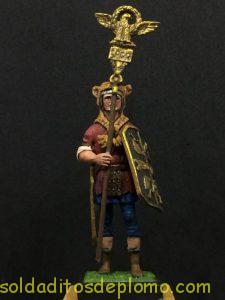Aquilifer Romano año 25 A.C.
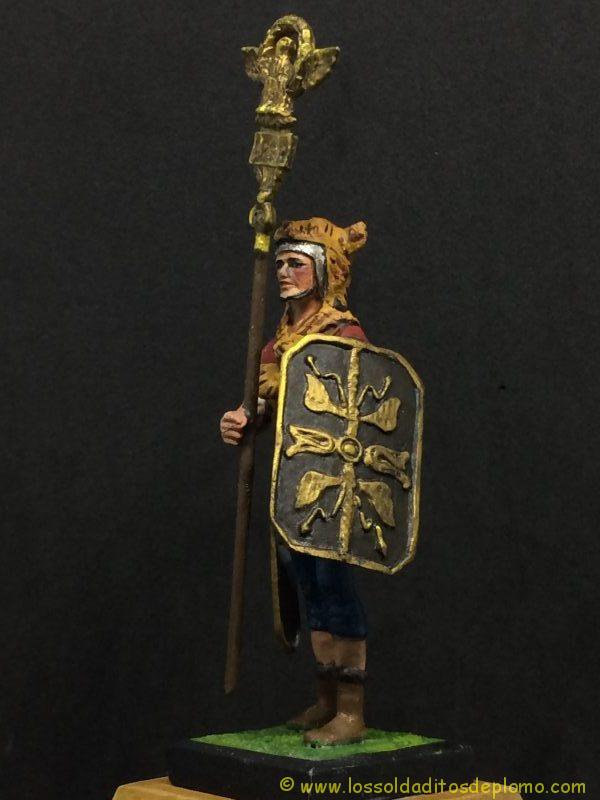
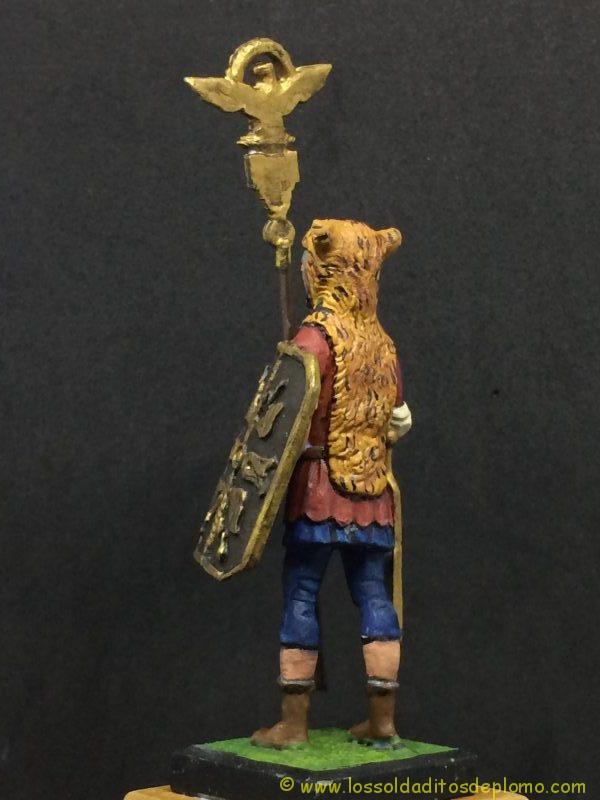
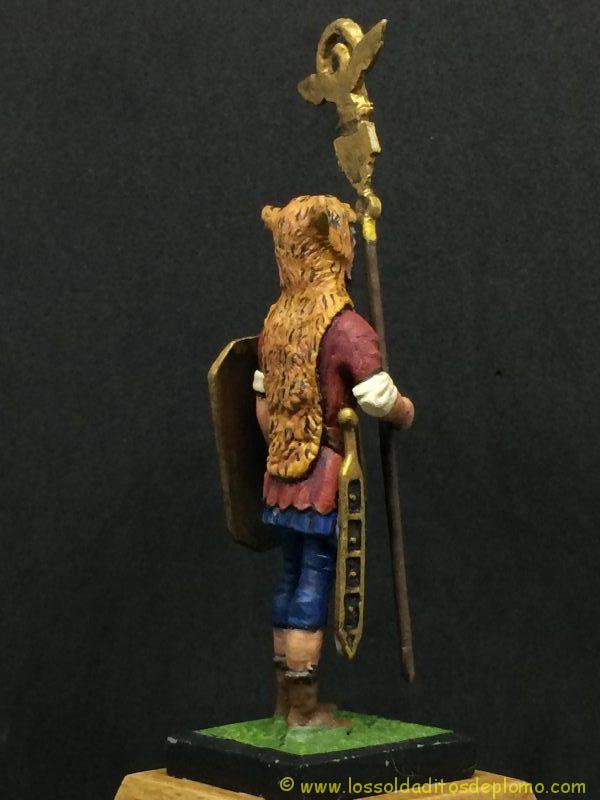
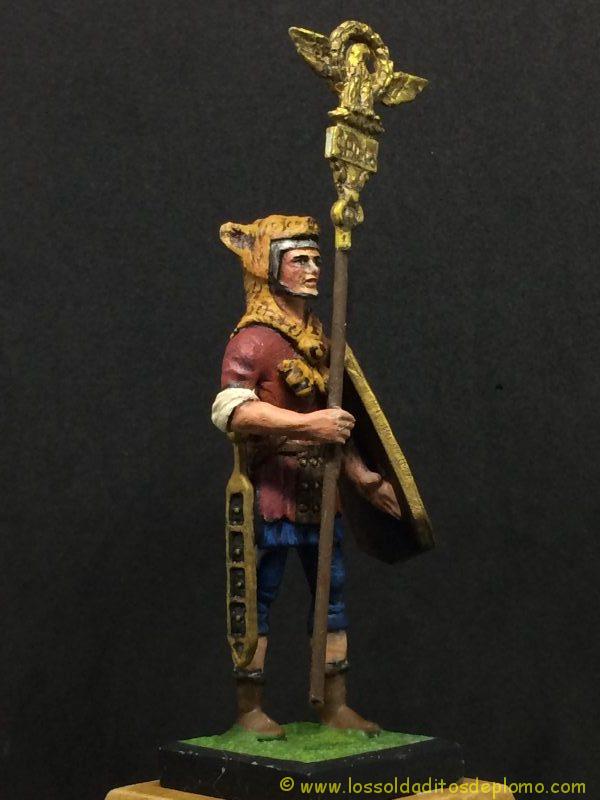
Un aquilifer era en la Antigua Roma un signifer de rango senior del ejército romano, un suboficial que portaba el águila del estandarte de las legiones. Su nombre deriva de aquila, que en latín significa águila, animal que se convirtió en símbolo universal de las legiones a partir del año 104 a. C. Antes de que el águila se impusiera como el emblema predominante de las legiones romanas, el lobo, el jabalí, el toro y el caballo ocuparon su lugar. El águila se convirtió en la posesión más importante de la legión, y su pérdida suponía el deshonor y la deshonra.
El emblema del águila estaba compuesto por un ejemplar de este animal labrado en metal cuyas alas rodeaban una corona de laurel y que se montaba sobre una estrecha base trapezoidal.
El aquilifer gozaba de gran prestigio dentro de la jerarquía del ejército romano; ha sido clasificado por los historiadores como un suboficial cuyo rango estaba por debajo del centurión y por encima del optio y que recibía el doble del salario del legionario raso. A diferencia de otros portaestandartes romanos como el signifer, el aquilifer no empleaba piel de animal como complemento para su vestuario. Portaba un pequeño escudo circular llamado parma que podía sujetarse al brazo si estaba empleando el arma o portando el estandarte.
An aquilifer was in Ancient Rome a signifer of senior rank of the Roman army, a noncommissioned officer who wore the eagle of the legion banner. Its name derives from aquila, which in Latin means eagle, animal that became the universal symbol of the legions from the year 104 a. C. Before the eagle was imposed as the predominant emblem of the Roman legions, the wolf, the boar, the bull and the horse took their place. The eagle became the most important possession of the legion, and its loss implied dishonor and dishonor.
The emblem of the eagle was composed of a specimen of this animal carved in metal whose wings surrounded a wreath of laurel and which was mounted on a narrow trapezoidal base.
The aquilifer enjoyed great prestige within the hierarchy of the Roman army; It has been classified by historians as a noncommissioned officer whose rank was below the centurion and above the optio and who received double the salary of the legionary saturn. Unlike other Roman standard bearers such as signifer, the aquilifer did not use animal skin as a complement to their costumes. It carried a small circular shield called parma that could be attached to the arm if it was using the weapon or carrying the standard.
L’emblème de l’aigle était composé d’un spécimen de cet animal sculpté dans du métal dont les ailes entouraient une couronne de laurier et qui était monté sur une base trapézoïdale étroite.
L’aquilifère jouissait d’un grand prestige au sein de la hiérarchie de l’armée romaine; Il a été classé par les historiens comme un sous-officier dont le rang était inférieur au centurion et supérieur à l’optio et qui recevait le double du salaire du légionnaire saturn. Contrairement à d’autres porte-drapeaux romains tels que signifer, l’aquilifère n’utilisait pas de peau de bête comme complément à ses costumes. Il portait un petit bouclier circulaire appelé Parma qui pouvait être attaché au bras s’il utilisait l’arme ou portait l’étendard.

